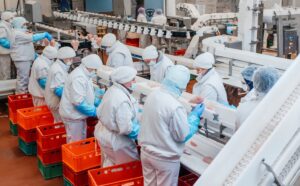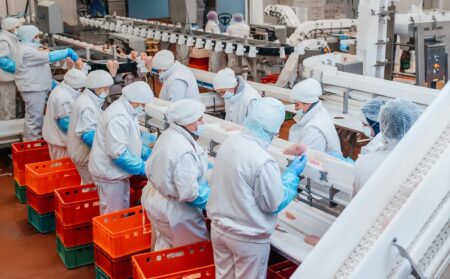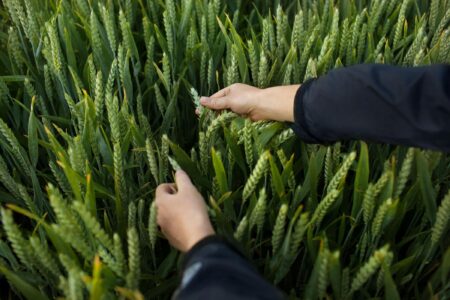As temperatures increase and summer brings stifling heat, now is the time to ensure your operation follows best practices for keeping cattle cool.
“Producers should keep in mind weather factors and be more observant going into a span of hot weather, particularly those humid, muggy days,” said Jason Banta, Extension beef cattle specialist with Texas A&M University’s AgriLife Research and Extension Center.
Heat stress in cattle shows up in symptoms such as slobbering and restlessness, according to University of Missouri Extension beef specialist Eric Bailey. Chronic heat stress can lead to long-term issues such as decreased fertility and weight gain, he said.
To successfully combat heat stress in your herd this summer, focus on these key areas with strategies from the experts.
Recognize Water’s Crucial Role
Water intake should be your top consideration when aiming to reduce or manage heat stress.
During heat stress, cattle lose water from increased respiration and perspiration, so their water requirements increase during those times, said Iowa State University Extension beef veterinarian Grant Dewell. Consuming water is also the fastest way for cattle to reduce their core body temperature, Dewell said, so consumption during heat stress events is greater than normal.
Dewell advised 3 inches of linear water space per head during the summer. “The water supply should be able to deliver 1.1% of body weight of the cattle per hour. A 1,000-pound animal needs about 1.5 gallons of water per hour,” he said.
An aspect some producers don’t think about is shading the metal feed and water troughs from the sun, Banta noted. “If those feed and water troughs are left out in the sun, they will heat up rapidly,” he said. “In order for the water source to have a cooling effect on the cattle, the drinking trough needs to be located in the shade.”
It’s also important to ensure the cattle are familiar with the type and location of the water source, Bailey said.
Although not as critical as water intake, water sprinklers can cool cattle during times of stress by increasing evaporative cooling and reducing ground temperature. Dewell said sprinklers are adequate when they wet the animal and not just mist the air.
However, sprinklers should not interfere with drinking water supply.
Dewell advised using sprinklers intermittently to avoid mud and increased humidity. He also cautioned against using sprinklers on a severely heat stressed animal: “Sprinklers need to be used before cattle are in extreme stress. Thermal shock from cold water can kill cattle that are extremely stressed.”
“Once sprinklers are utilized, they need to be continued until the heat event is over and cattle can manage on their own,” Dewell added.
Keep It Cool and Breezy
Meredith Operations Corp.
Animals get hot outside, just as humans do, and darker animals tend to absorb more heat. It’s important to remember that some animals with light-colored hair hide dark skin underneath, so they can become warmer much faster than anticipated.
Dewell said each animal should have 20–40 square feet of shade. Shade structures are most adequate when they have an east-west orientation and are more than 8 feet off the ground to ensure sufficient air movement. An east-west orientation keeps the ground cooler, but if the ground tends to get muddy, then a north-south orientation is better. That design increases drying as the shade moves across the ground through the day.
Shade isn’t the only part of the cooling puzzle. “Ideally, that shady area is something that has good wind flow,” Banta said. “Putting cattle in a barn with shade won’t suffice if there is no breeze.”
Dewell said wind speed has been associated with a cow’s ability to regulate its heat load, and producers can increase chances for cattle to be exposed to good air flow. Even removing tall vegetation within 150 feet of feedlot pens can expose cattle to more air movement.
Bailey advised looking online for shade structures to purchase or build. Animals can also be moved to natural shade areas.
Permanent Constructed Shade
If you construct a shade structure, former South Dakota State University Extension Cow/Calf Field Specialist Jim Krantz said cattle producers should consider these factors:
- Construct shades toward the center of a pen to allow cattle access to a shaded area that moves across the pen throughout the day.
- Orient the structure north-south in muddier areas to provide dryer pen surfaces as the shadow moves over a greater area.
- Do not erect shades over or near water.
- Regularly clear wet manure from beneath shade structures to limit odor and ammonia production and maintain a desirable lot surface.
- Consider shade heights of at least 14 feet to allow for both greater air movement and cleaning with equipment.
Galvanized or aluminum materials have been used as roof materials, but light-colored fabric is becoming the material of choice, in part because it’s relatively easy to handle if removed or rolled up in the winter.
Consulting with a feedlot engineer is recommended for anyone considering constructing feedlot shades
Portable Constructed Shade
Steve Higgins, the director of environmental compliance at the University of Kentucky, said portable structures topped with 80% occluded cloth allow you to combine best grazing management practices.
“You can move that structure from pasture to pasture as you move your animals with rotational grazing,” Higgins said. “So you don’t have to have a fixed facility in the field for providing shade.
“The other benefit of providing shade structures with the cloth is that you’re able to move them within the field, so that when they create this depression area and this manure pack, what you can do is you can hook a gator, an ATV, or tractor, and you can pull that shade structure out of that area.”
Natural Shade
Higgins said natural shade from trees is by far the best option for cattle, but it can also be a double-edged sword.
“The leaves are actually transpiring water,” Higgins said. “So they’re giving off this water, and it creates this micro-cooling effect underneath the tree and around the tree. It works really, really well. The problem with trees is that if the animals have access to them, what can happen is they can compact the soil underneath the tree and they can expose the roots. If they mess up the roots too much, basically the tree is going to die of what we call heart rot.”
Trees along the southern and western edges of the pasture are ideal. Higgins advised fencing them off so they still provide shade but cattle don’t have access to them.
Limit Cattle Working
There’s more to consider than just external heat. A cow’s movement and digestion generate heat internally, and that can have as significant an impact on heat stress as external radiation.
In that case, it’s best to work or handle cattle in cooler parts of the day, if possible — in the morning, before the sun gets too hot, or in the evening, when the sun is going down.
Besides the time of day, be mindful of the time itself. “When working cattle, make sure you don’t keep them in pens more than 30 minutes to one hour,” Banta said. “It’s also important that they have space amongst each other for evaporative cooling.”
Dewell said feedlots should evaluate cattle daily for heat stress, especially during the months of July and August. “Special attention should be paid to cattle with increased risk of heat stress, including heavy cattle, black cattle, and respiratory-compromised animals,” he said.
Be Strategic With Feed
Meredith Operations Corp.
Even diet can play a role in counteracting heat stress.
Dewell said heat production from feed intake peaks four to six hours after feeding. In that case, heat production in cattle fed in the morning peaks when environmental temperatures are also at their highest, in midday.
To avoid coupling heat production from feed intake with peak environmental temperatures, Dewell advised that cattle consume at least 70% of their feed two to four hours after the day’s peak temperatures.
Dewell said altering the energy content of feed is another strategy. “Changing the ration has been controversial, but research indicates that lowering the energy content of diet will decrease the heat load,” Dewell added. “The general recommendation is to reduce the diet-energy content by 5–7%.”
‘Shoo Fly, Don’t Bother Me’
In general, flies are more active in the heat, and the pests exacerbate heat stress in cattle.
Having a strategy to fight flies helps producers not only diffuse a buildup of excess heat but also maintain the health of their cattle. Banta said stable flies cause cattle to congregate in small, tightly packed groups to fight them. This decreases cooling.
Dewell said worthwhile fly-control strategies include minimizing their breeding areas and applying insecticides to decrease populations before times of heat stress.
Jody Korthaus, Audrey Kittrell, Jordan Anderson, and the University of Missouri also contributed to this article


:max_bytes(150000):strip_icc()/Farm20for20Sale20sign-1-c00d69e739e045a384a3253e029967e3.jpg)




:max_bytes(150000):strip_icc()/50720663097_541813f8c2_o-50dafb5e1c444f38a004160e10dbc8a4.jpg)


:max_bytes(150000):strip_icc()/Markets-7-Corn-up-soybeans-down-4-c814fcb1d9864480b6c57b36bea34b9a.jpeg)
:max_bytes(150000):strip_icc()/101303256_farm_field-e23df8d637c14d2f8a70ba10c9546654.jpg)
